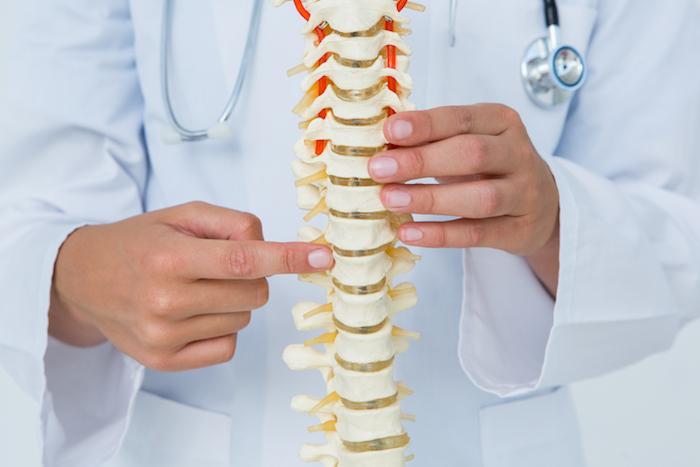Disc replacement surgery focuses on the intervertebral discs, which act as cushions between the bones of the spine. These discs can wear out or become damaged due to age, injury, or specific medical conditions. When this happens, individuals may experience pain, reduced mobility, or nerve-related symptoms.
What Is Disc Replacement Surgery?
During the procedure, the damaged disc is removed and replaced with an artificial disc. The artificial disc is typically made of metal or plastic to mimic the function of a natural disc. By replacing the worn or damaged disc, disc surgery aims to restore spinal alignment and allow for greater freedom of movement.
How Do You Know If Disc Surgery Is Right for You?
Determining whether disc surgery is appropriate depends on several factors. Diagnosing the underlying issue accurately is often the first step. Healthcare professionals may conduct imaging tests, such as an MRI or CT scan, to assess the condition of the spine and identify any damaged discs.
Individuals may benefit from disc replacement surgery if other treatments have not provided relief.
These treatments may include physical therapy, medication, or injections. Candidates for the procedure are often those who experience moderate to severe pain that interferes with daily activities. Individuals should consult with a medical specialist to discuss their symptoms, treatment history, and expectations to evaluate suitability.
Symptoms That May Indicate a Need for Surgical Intervention
Spinal disc issues can manifest in various ways, and the symptoms depend on which part of the spine is affected. Common signs include:
- Chronic back or neck pain that persists despite non-surgical treatments
- Pain radiating into the arms or legs, which may indicate nerve compression
- Numbness, tingling, or weakness in the extremities
- Difficulty with mobility or performing daily tasks due to stiffness or discomfort
Types of Disc Procedures
One of the most effective surgical options is Microdiscectomy, a minimally invasive procedure that uses a microscope or small camera to remove the herniated portion of the disc through a tiny incision. This approach minimizes tissue damage, speeds up recovery, and reduces post-surgical pain.
| Procedure | Description | Benefits |
|---|---|---|
| Traditional Discectomy | Larger incision, open surgery | Allows for a more thorough removal of damaged disc material but requires longer recovery |
| Microdiscectomy | Small incision with a microscope | Less disruption to tissues, faster healing, lower risk of complications |
| Endoscopic Discectomy | Performed using a small tube and camera | Least invasive, allows for same-day discharge and minimal scarring |
The Surgery Process
Before Surgery:
- You may need to fast (avoid food and drinks) for a certain period.
- Blood-thinning medications might need to be adjusted to reduce bleeding risks.
- Your healthcare provider will provide detailed pre-surgical instructions.
During Surgery:
- The procedure is done under general anesthesia, meaning you’ll be asleep.
- The surgeon removes only the portion of the disc causing nerve compression.
- In cases where the entire disc needs removal, the surgeon may insert a bone graft or synthetic substitute to maintain spinal stability.
After Surgery:
- You’ll be monitored in a recovery room for potential complications.
- Many patients go home the same day, but some may require a short hospital stay.
- Return to work varies:
- Desk jobs: 2-6 weeks
- Physically demanding jobs: 6-8 weeks
What Should You Expect During the Surgery?
Understanding the procedure can help individuals prepare for disc surgery. The surgery is typically performed in a hospital setting, under general anesthesia. The length of the procedure can vary, but it generally takes a few hours. Here’s a basic overview of what happens during the surgery:
- The surgeon begins by making an incision to access the spine. For lumbar disc surgery, this incision is often made through the abdomen.
- The damaged disc is carefully removed to avoid impacting surrounding tissue or nerves.
- An artificial disc is implanted in the space left by the removed disc. The artificial disc is positioned and secured for proper alignment.
- The surgeon verifies that the artificial disc allows for movement and stability before closing the incision.
Potential Risks
While discectomy is generally safe, like any surgery, it carries some risks, including:
- Infection at the incision site
- Bleeding or blood clots
- Leaking spinal fluid (if the protective covering of the spine is damaged)
- Nerve injury, though rare, can occur
Expected Outcomes & Long-Term Recovery
Most patients experience significant relief from nerve pain following surgery. However, discectomy does not prevent future disc problems. To maintain a healthy spine:
- Maintain a healthy weight
- Engage in low-impact exercises (walking, swimming, or yoga)
- Avoid repetitive bending, twisting, or heavy lifting
Recognizing the Signs of Disc Surgery

A herniated disc can put pressure on a nerve, leading to pain, numbness, or muscle weakness. However, not all back pain means you have a herniated disc—mild discomfort might stem from other causes. The severity and location of the herniation determine the symptoms you’ll experience.
Common Symptoms of Disc Surgery
Lower Back (Lumbar Herniation)
If the herniated disc is in the lower back, you may experience:
- Lower back pain: Can range from mild to severe and may worsen with movement.
- Muscle spasms: Tightening or cramping of muscles near the affected area.
- Sciatica: Burning, tingling, or numbness that radiates from the lower back through the buttocks, leg, or foot.
- Leg weakness or loss of sensation: Difficulty standing, walking, or feeling sensations in the leg.
Neck (Cervical Herniation)
A herniated disc in the neck may present with:
- Pain in the neck or between the shoulder blades: Can worsen with movement.
- Radiating pain (Radiculopathy): Sharp or aching pain extending into the arm, hand, or fingers.
- Tingling or numbness: Loss of sensation in the arm or shoulder.
What Causes a Disc Surgery?
Discs Surgery are most common in young and middle-aged adults, though several factors can increase the risk:
| Cause | Description |
|---|---|
| Spinal Injuries | Falls, accidents, or sudden impact injuries can put excessive force on the spine, causing disc damage. |
| Repetitive Motion | Repeated lifting, bending, or twisting with improper posture can strain the discs over time. |
| Aging & Degeneration | As we age, spinal discs lose water content and flexibility, making them more prone to tears. |
| Obesity & Inactivity | Extra weight puts additional pressure on the spine, while lack of exercise weakens core muscles that support the spine. |
| Smoking | Tobacco use reduces oxygen supply to the discs, accelerating degeneration. |
Final Thoughts
Discectomy is a highly effective procedure for nerve-related back and leg pain. If non-surgical treatments aren’t helping, talk to your doctor about whether this surgery is the right choice for you. With proper recovery and lifestyle adjustments, many people regain their mobility and return to normal activities with minimal discomfort.
Real-Life Example: A Patient’s Journey with Discectomy
John’s Story:
John, a 42-year-old office worker, had been suffering from severe lower back pain and radiating leg pain for over six months. Initially, he tried physical therapy, pain medications, and lifestyle changes, but nothing provided long-term relief. His doctor diagnosed him with a herniated disc pressing on his sciatic nerve, causing persistent discomfort and weakness in his right leg.
After a thorough consultation, John opted for a microdiscectomy. The procedure took about an hour, and he was discharged the same day. Within three weeks, he started light physical therapy to strengthen his muscles and prevent future injuries. By the sixth week, John was back at work, following his doctor’s advice on posture and movement.
Today, John enjoys a pain-free life and continues to manage his spine health through regular low-impact exercises and healthy weight maintenance.
What Comes Next?
Following disc replacement surgery, the rehabilitation period plays a key role in recovery. Many individuals can return to light activities within a few weeks, although full recovery may take several months. Adhering to the recommendations of healthcare professionals, supports a smoother recovery process. If you’re experiencing ongoing back or neck pain and are exploring disc surgery as an option, discussing your specific circumstances with a healthcare professional is key.

